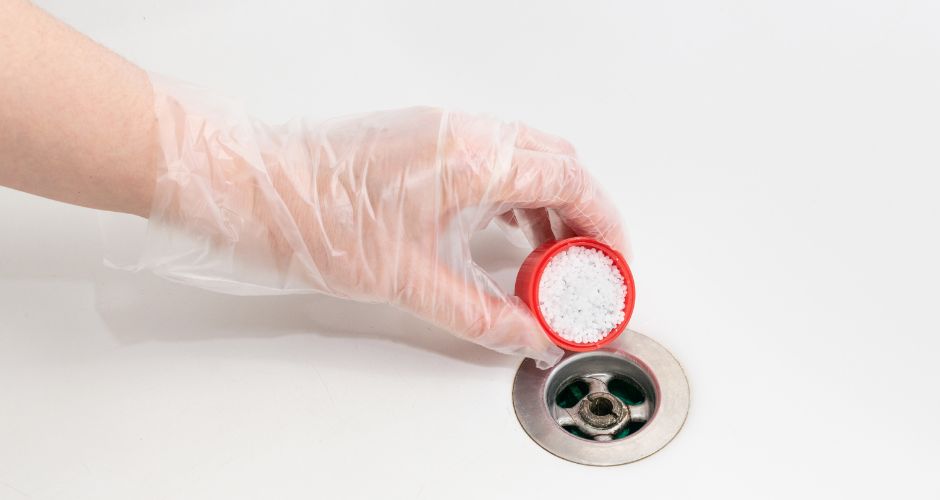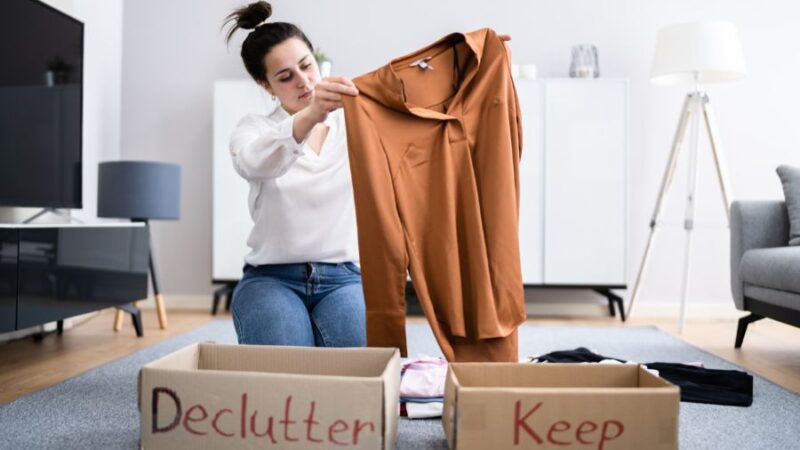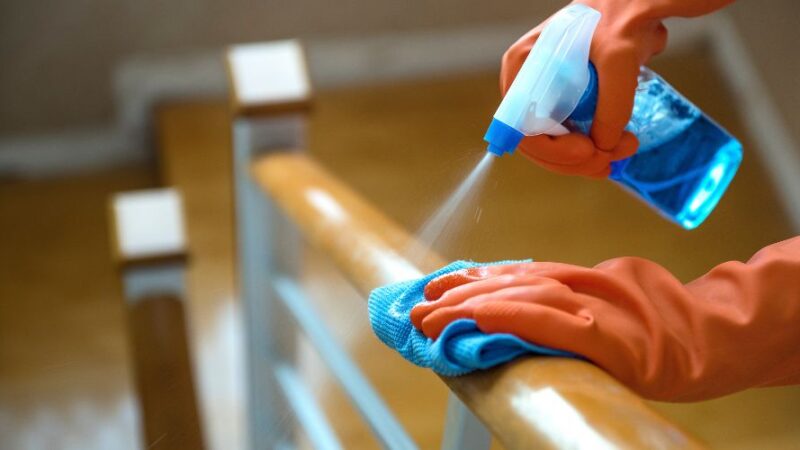How to Unclog Blocked Drain in Your Home

A clogged drain is one of the most common-and frustrating-household problems. Whether it’s a slow-draining sink, a backed-up shower, or a toilet that won’t flush properly, blockages can disrupt your daily routine and even lead to water damage or unpleasant odors if left untreated.
The good news? Most clogged drains can be fixed without calling a plumber. With the right tools, techniques, and a little patience, you can tackle many drainage issues yourself and save time and money.
In this guide, we’ll walk you through simple, step-by-step method how to unclog a sink or drain using both natural remedies and mechanical tools. From kitchen sinks to bathroom drains, you’ll learn how to safely and effectively restore flow-and prevent future clogs from happening in the first place.
Understanding the Culprits
Blocked drains can disrupt the flow of your daily routine, and to effectively address the issue, it’s crucial to identify the common culprits responsible for clogging your pipes. In this segment, we unveil the primary causes behind blocked drains, shedding light on the substances that contribute to this plumbing dilemma.
1. Hair Buildup: One of the leading causes of blockages is that hair easily accumulates in bathroom drains. Over time, hair combines with soap scum, creating stubborn clogs that impede water flow.
2. Soap Scum: The residue left behind by soap and body wash can adhere to pipes, attracting other debris and forming a sticky film that gradually obstructs drainage.
3. Grease and Cooking Oils: In kitchen sinks, grease and cooking oils solidify as they cool, adhering to pipe walls. This buildup traps food particles, contributing to slow drainage and blockages.
4. Food Debris: Items like coffee grounds, small food particles, and kitchen scraps can accumulate in the kitchen drain, creating blockages over time.
5. Foreign Objects: Accidental introduction of foreign objects, such as hygiene products, cotton swabs, or children’s toys, can lead to significant blockages in pipes.
6. Mineral Buildup: Hard water can result in the accumulation of mineral deposits, particularly in regions with high mineral content. This buildup can restrict water flow and lead to blockages.
7. Tree Roots: In outdoor drains, tree roots seeking moisture can infiltrate pipes, causing blockages and even pipe damage. This issue often requires professional attention.
8. Toilet Paper and Hygiene Products: Excessive use of toilet paper or flushing non-dissolvable hygiene products can lead to blockages in the toilet drain.
9. Buildup of Debris in Gutters: Outdoor drains connected to gutters can become blocked with leaves, twigs, and other debris, impeding proper water drainage.
10. Aging Pipes: Over time, pipes can deteriorate, leading to the formation of rough surfaces that catch debris and contribute to blockages.

Preventive Measures
Preventing blockages before they occur is a key strategy in maintaining a smoothly running plumbing system. In this segment, we explore practical preventive measures that you can implement to safeguard your drains and minimize the risk of clogs. Adopting these habits can save you from the inconvenience of blocked drains and the associated plumbing headaches.
1. Use Drain Strainers: Install drain strainers in sinks, showers, and tubs to catch hair, soap scum, and debris before they enter the drain. Regularly clean and empty the filters to maintain their effectiveness.
2. Mindful Disposal in the Kitchen: Dispose of kitchen grease and cooking oils properly by collecting them in a container and disposing of them in the trash. Avoid pouring them down the kitchen sink, where they can solidify and contribute to blockages.
3. Regular Hot Water Flush: Routinely flush drains with hot water to help prevent the buildup of soap scum, grease, and other substances. Hot water can break down these materials and keep pipes clear.
4. Be Mindful of What Goes Down: Avoid flushing non-dissolvable items down toilets, such as hygiene products, cotton swabs, and paper towels. Dispose of these items in the trash to prevent toilet blockages.
5. Outdoor Drain Maintenance: Keep outdoor drains and gutters clear of debris, such as leaves and twigs. Regularly inspect and clean gutters to prevent water overflow and potential drainage issues.
6. Routine Professional Inspections: Schedule regular plumbing inspections by professionals to identify potential issues before they escalate. Early detection can prevent major blockages and ensure the longevity of your plumbing system.
7. Mind the Garbage Disposal: Use the garbage disposal in the kitchen sink responsibly. Avoid disposing of large food scraps and fibrous materials that can strain the disposal and contribute to blockages.
8. Avoid Harsh Chemicals: Refrain from using harsh chemical drain cleaners regularly, as they can damage pipes and harm the environment. Opt for natural alternatives or seek professional assistance when needed.
9. Educate Household Members: Educate everyone in your household about proper drain usage and the items that should not be flushed or washed down drains. Creating awareness helps build a collective effort to prevent blockages.
10. Consider a Plumbing Upgrade: If you have an older plumbing system with ageing pipes, consider upgrading to modern, corrosion-resistant materials to prevent issues related to deteriorating pipes.
By incorporating these preventive measures into your routine, you take a proactive

DIY Methods for Unclogging
Encountering a clogged drain doesn’t always necessitate a call to the professionals. Many blockages can be effectively addressed with simple do-it-yourself (DIY) methods using common household items. In this segment, we’ll guide you through practical DIY solutions to unclog drains, providing step-by-step instructions for a hassle-free resolution.
1. Baking Soda and Vinegar: Start by pouring a pot of boiling water down the drain. Follow this with a cup of baking soda, allowing it to sit for a few minutes. Then, pour a mixture of one cup of vinegar and one cup of hot water down the drain. Cover the drain and let the fizzing action work for about 10 minutes before flushing with hot water.
2. Plunger Power: For sink and bathtub drains, use a plunger to create suction. Ensure there’s enough water to cover the plunger, then vigorously plunge up and down for about a minute. This can dislodge the blockage, allowing water to flow freely.
3. Wire Hanger or Drain Snake: If hair or debris is causing the blockage, straighten a wire hanger and create a small hook at one end. Alternatively, use a drain snake. Insert the hanger or snake into the drain and gently maneuver it to catch and pull out the clog.
4. Boiling Water Alone: In cases where the blockage is due to grease or soap scum, pouring a pot of boiling water down the drain may be sufficient. This can help break down and flush away the buildup.
5. Wet and Dry Vacuum: For tougher clogs, use a wet and dry vacuum to remove the water and create a seal. Set the vacuum to the wet setting and cover the vent to prevent a mess. Plunge as usual after creating a tight seal.
6. Salt and Baking Soda: Mix equal parts salt and baking soda and pour the mixture down the drain. Let it sit for several hours or overnight. Flush with hot water to remove the loosened debris.
7. Dish Soap and Hot Water: Pour a generous amount of dish soap down the drain, followed by hot water. The soap can help break down grease and lubricate the pipe, facilitating the removal of the blockage.
8. Caution with Chemical Cleaners: Exercise caution when using chemical drain cleaners, as they can be harsh on pipes and may pose safety risks. If used, follow the manufacturer’s instructions carefully.
9. Repeated Flushing: For toilets, repeated flushing with hot water may help dislodge minor blockages. Ensure the water level is not too high to prevent overflow.
10. Tackle Outdoor Drains: Clear outdoor drains by removing debris manually and flushing with a hose. Consider using a plumbing auger for stubborn blockages.
Chemical Drain Cleaners
Chemical drain cleaners, readily available in most households, offer a quick and convenient solution for unclogging drains. However, the use of these products comes with both advantages and drawbacks. In this segment, we explore the pros and cons of chemical drain cleaners and provide guidelines for their safe usage.
Pros of Chemical Drain Cleaners
- Convenience: Chemical drain cleaners are readily available in supermarkets and hardware stores, providing a convenient option for homeowners facing sudden drain blockages.
- Ease of Use: Using chemical drain cleaners is a straightforward process. Simply pour the recommended amount down the drain, wait for the specified duration, and flush with water.
- Affordability: Chemical drain cleaners are often cost-effective, making them an attractive option for those looking for a budget-friendly solution to minor drain clogs.
Cons of Chemical Drain Cleaners
- Harsh Chemicals: Most chemical drain cleaners contain powerful and corrosive chemicals, such as sodium hydroxide (lye) or sulfuric acid. These substances can be harmful to pipes and may pose health risks if not handled properly.
- Potential Pipe Damage: The corrosive nature of chemical drain cleaners can lead to damage to pipes, especially older or weakened ones. Repeated use may contribute to the degradation of plumbing systems.
- Environmental Impact: The chemicals in drain cleaners can have adverse effects on the environment when disposed of improperly. Runoff from these products can harm aquatic ecosystems and soil quality.
- Ineffectiveness on Certain Clogs: Chemical drain cleaners may not be effective on certain types of clogs, such as those caused by solid objects or extensive blockages. In
Common Mistakes to Avoid
Dealing with a blocked drain can be a frustrating experience, and while attempting to address the issue, it’s crucial to avoid common mistakes that could exacerbate the problem. In this segment, we’ll highlight key mistakes to steer clear of when tackling blocked drains, offering insights to ensure a smoother resolution without unintentional setbacks.
- Over Reliance on Chemical Drain Cleaners: While chemical drain cleaners can be effective in certain situations, overusing them may lead to pipe damage and environmental concerns. Avoid excessive reliance on these products and explore alternative methods for regular maintenance.
- Ignoring Early Warning Signs: Neglecting early warning signs of drainage issues, such as slow water drainage or unpleasant odours, can result in more severe blockages over time. Address minor issues promptly to prevent them from escalating.
- Using Excessive Force: Applying excessive force when using a plunger or drain snake can lead to damage, especially in fragile pipes. Use gentle, controlled movements to avoid causing harm to your plumbing system.
- Dismissing DIY Methods: DIY methods, when used correctly, can effectively resolve many minor drain blockages. Dismissing these methods in favour of more aggressive approaches may lead to unnecessary complications.
- Flushing Non-Dissolvable Items: Flushing non-dissolvable items down toilets, such as sanitary products, cotton swabs, or paper towels, can contribute to toilet blockages. Dispose of these items in the trash to prevent plumbing issues.
Conclusion
Say goodbye to the frustration of a blocked drain by arming yourself with the knowledge and techniques provided in this guide. Whether you opt for DIY methods or decide it’s time to call in the pros, you’ll be equipped to restore the flow and maintain a smoothly running plumbing system in your home.






